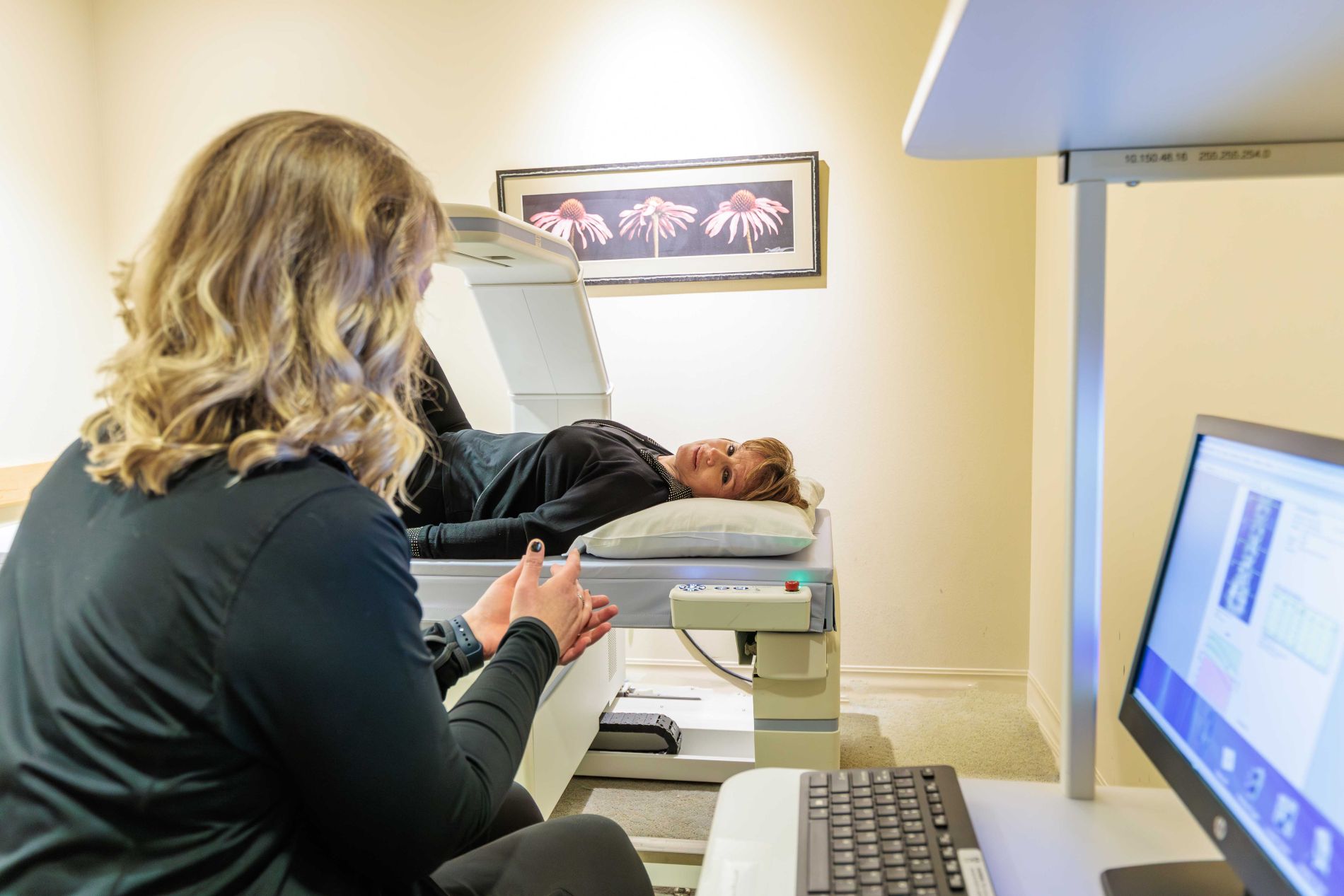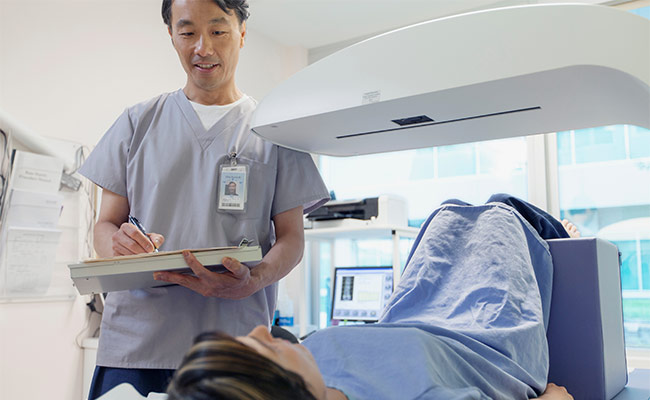Bone Density Scan (DXA)
A Dual-energy X-ray Absorptiometry (DXA) scan, also known as a DEXA Bone Density or Bone Densitometry Scan, is a non-invasive test that measures bone mineral density to assess if a person is at risk of fracture or osteoporosis. It is also useful in tracking the effects of treatment for osteoporosis and other conditions that can cause bone loss.

Bone density testing is recommended to the following:
- Post-menopausal women or women age 60+ who have risk factors for developing osteoporosis
- Patients with a personal or maternal history of hip fracture or smoking
- Post-menopausal women who are tall (over 5 feet 7 inches) or thin (less than 125 pounds)
- Men and women who have hyperparathyroidism
- Men and women who have been on medications that are known to cause bone loss for an extended period
How should I prepare?
- Refrain from taking calcium supplements for at least 24 hours beforehand.
- Wear comfortable clothing and avoid garments that have zippers, belts or buttons made of metal.
- Let your technologist know if you’ve recently had a barium examination, have been injected with a contrast material for a CT or MRI, or radioisotope scan.
- Let your technologist know if there is a possibility you are pregnant.
Who interprets the Bone Density Scan results and how do I receive them?
The results of a DEXA bone density exam are interpreted by a radiologist and forwarded to your doctor. Your test results will be in the form of one of two scores:
T score – This number is used for postmenopausal women as well as men and women over the age of 50. This number shows the amount of bone you have compared to a young adult of the same gender with peak bone mass. A score above -1 is considered normal. A score between -1 and -2.5 is classified as osteopenia, the first stage of bone loss. A score below -2.5 is defined as osteoporosis. It is used to estimate your risk of developing a fracture.
Z score – This number is used for premenopausal women as well as men and women under the age of 50. This number reflects the amount of bone you have compared to other people in your age group and of the same size and gender. If it is unusually high or low, it may indicate a need for further medical tests.

Downloadable Forms
Frequently Asked Questions
How long does the exam take?
The exam may take anywhere from 5-30 minutes from start to finish.
Can I eat or drink before the exam?
Yes, unless instructed by your doctor or technologists.
Can I drive after the exam?
Yes, you may continue normal activities after the exam.
Can I schedule my exam?
Imaging scans are not a self-referral exam. We will be required to have a signed order from your physician to proceed with diagnostic exams or procedures. A schedule coordinator will contact you to schedule your exam and to gather necessary information. This helps enable us to get you registered and back for your exam as quickly as possible.
How will I receive my results?
The specialty trained radiologists at Dakota Radiology Imaging Center will review the newly acquired images and any previous related exams. They will dictate a detailed report explaining their findings. The report is sent to your physician. Your physician will review the findings with you.
Will my insurance cover my procedure?
Many private insurance companies and Medicare provide coverage for some imaging procedures depending on medical necessity. The staff at Dakota Radiology Imaging Center will be happy to work with you to verify your benefits, eligibility and authorizations. We will submit claims as needed for your imaging scans. If the procedure cannot be covered by your insurance provider, we will be happy to develop a payment plan with you.

 MRI
MRI CT
CT PET
PET Ultrasound
Ultrasound Women's Imaging
Women's Imaging X-Ray
X-Ray Bone Densitometry (DEXA)
Bone Densitometry (DEXA)